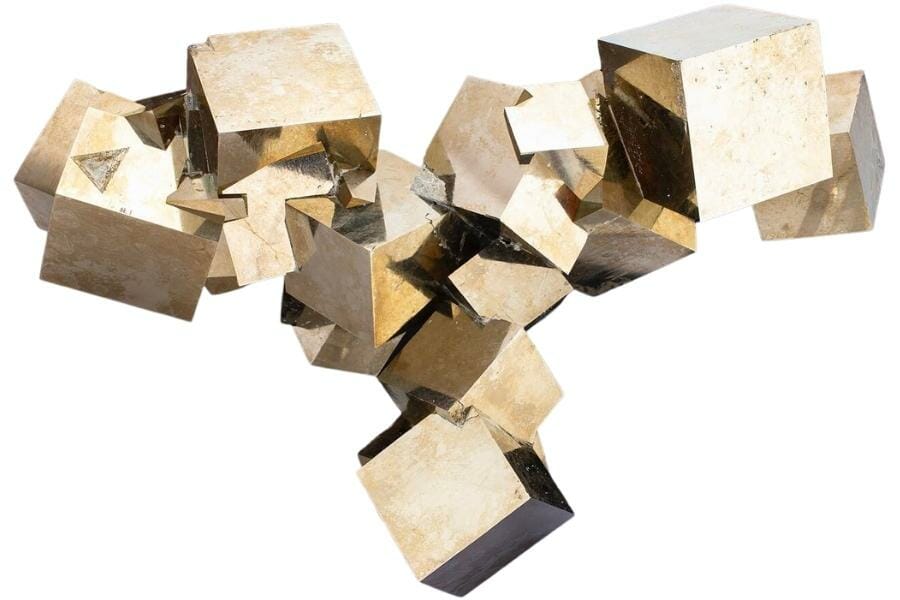Often referred to as “Fool’s Gold,” pyrite’s striking golden color and glittering appearance make it an intriguing find. In its natural habitat, it can be mistaken for actual gold due to its gleaming appearance.
But what makes it even more interesting is the thrill of the hunt and the challenge of identifying it. The first step to feeling this thrill is to know how to find pyrite.
In this article, we’ll guide you on a journey to uncover the secrets of pyrite hunting. We’ll share valuable insights on where to look for pyrite-rich locations and provide tips for identifying this captivating mineral in the field.
With the right knowledge and a keen eye, you’ll be better equipped to find and appreciate the beauty of pyrite in its natural habitat.
What Pyrite Is
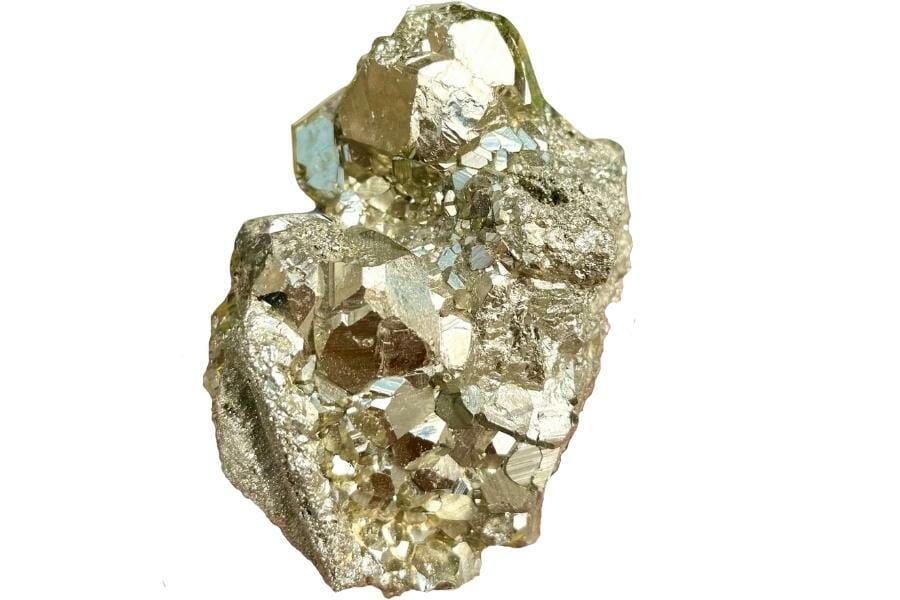
Pyrite is a golden-hued mineral with a dazzling metallic luster. It resembles the much-prized gold, but it’s a distinct entity in the world of geology.
It forms when iron and sulfur combine in specific geological conditions that typically involve the presence of water and oxygen. Over time, iron sulfide minerals crystallize, resulting in pyrite’s formation.
This remarkable mineral often occurs in sedimentary rocks, coal beds, shale, and sometimes in hydrothermal veins or igneous rocks.
It can be found in a variety of locations worldwide. You might stumble upon it while exploring rocky terrains, ranging from the picturesque landscapes of Spain to the rugged mountains of Peru.
Though pyrite is not as valuable in terms of wealth, its significance and beauty make it a treasure worth seeking out. This makes it crucial to know how to identify pyrite and avoid mistaking it for an ordinary rock or gold.
The different types of pyrite
If you’re eager to learn all about how to find pyrite, getting yourself familiar with its different types would be important.
You don’t want to miss out on a specimen just because it looks slightly different from the pyrite that you know. Below are this mineral’s variations based on its form:
Cubic pyrite
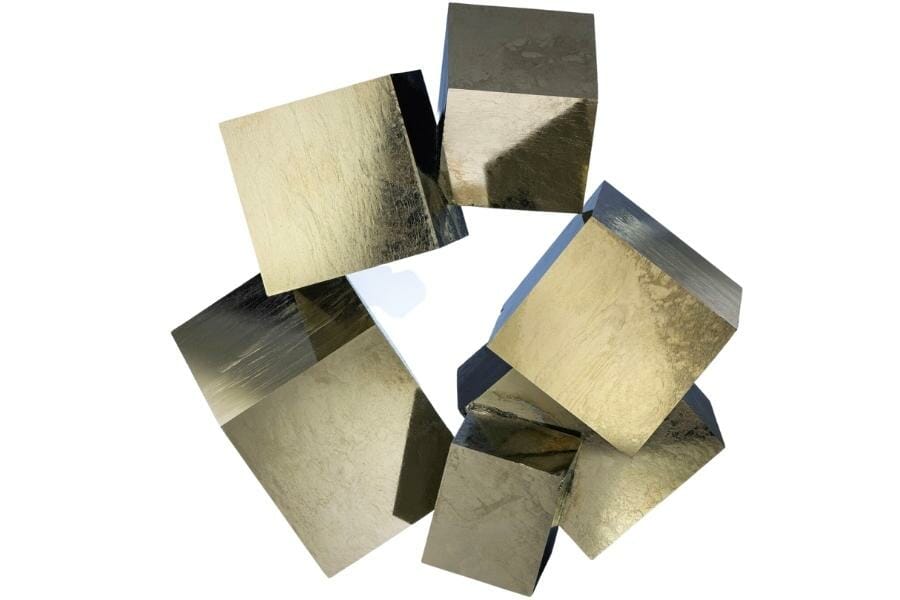
What sets cubic pyrite apart from other pyrite forms is its captivating cubic structure, which forms perfect, blocky, and geometrically precise crystals. Its symmetry and precision make it a favorite among geologists and rockhounds.
Its hallmark is its square faces and sharp edges, creating the appearance of miniature golden cubes. These stunning crystals often grow in clusters, offering a dazzling spectacle for mineral enthusiasts and collectors.
The ancient Incas of Peru used cubic pyrite crystals as mirrors, showcasing not only their aesthetic appeal but also their reflective properties
If you’re curious about where to find cubic pyrite in real life, it can be found in hydrothermal veins, sedimentary rocks, and sometimes even in volcanic deposits.
Pyritohedral pyrite
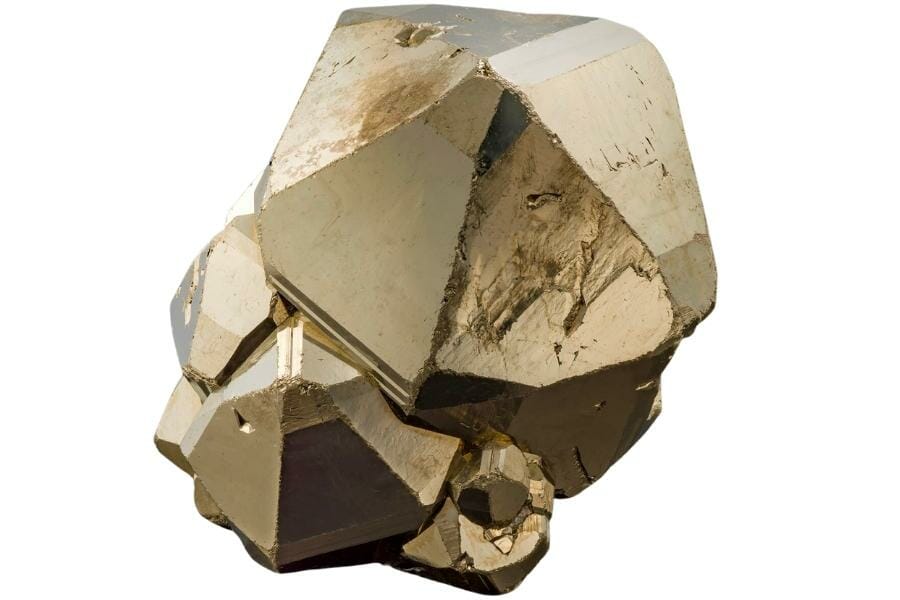
Pyritohedral pyrite forms in a mesmerizing dodecahedral or 12-sided shape, resembling a polyhedron with triangular faces. It’s prized for its geometric beauty.
The name “pyritohedral” is derived from its crystal habit. Historically, it’s used as a symbol of protection against negative energies. People used to carry it as talismans for good luck and to ward off harm.
Pyritohedral pyrite crystals can be found as individual specimens or in groups, often forming eye-catching clusters that showcase their mesmerizing shape.
Notable localities for pyritohedral pyrite include Peru, Spain, and the United States in their hydrothermal veins, sedimentary rocks, and metamorphic environments.
Octahedral pyrite
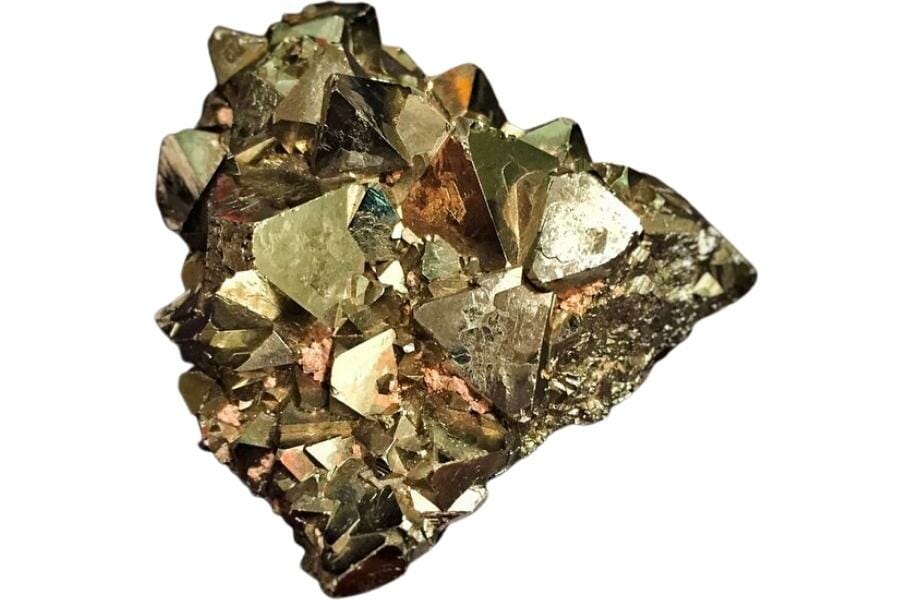
Octahedral pyrite has a remarkable eight-sided shape, resembling a polyhedron with diamond-like faces.
Its name stems from its characteristic shape, which consists of two four-sided pyramids joined at their bases. The resulting structure is a symmetrical and elegant mineral specimen.
Octahedral pyrite crystals can be found in hydrothermal veins, sedimentary rocks, and metamorphic environments. They are often discovered as individual specimens or in clusters.
Octahedral pyrite’s unique geometry and historical significance make it a prized discovery. So, when you’re out exploring for pyrite, keep an eye out for it.
Twinned pyrite
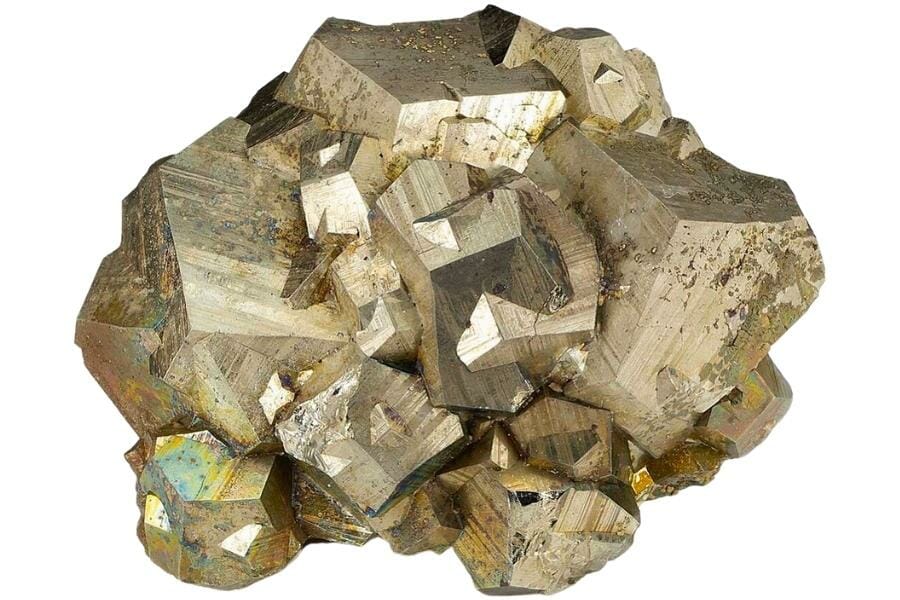
Twinned pyrite is formed through the occurrence of crystal twinning, where two or more pyrite crystals appear to intersect or grow together.
The term “twinning” refers to the phenomenon where two or more crystals of the same mineral grow together in a symmetrical pattern.
In the case of twinned pyrite, you may encounter specimens where two pyrite cubes intersect. Sometimes, it’s referred to as “iron crosses” due to its characteristic cross-like appearance.
Twinned pyrite crystals can be found in various geological settings, including hydrothermal veins, sedimentary rocks, and metamorphic environments.
Drusy pyrite
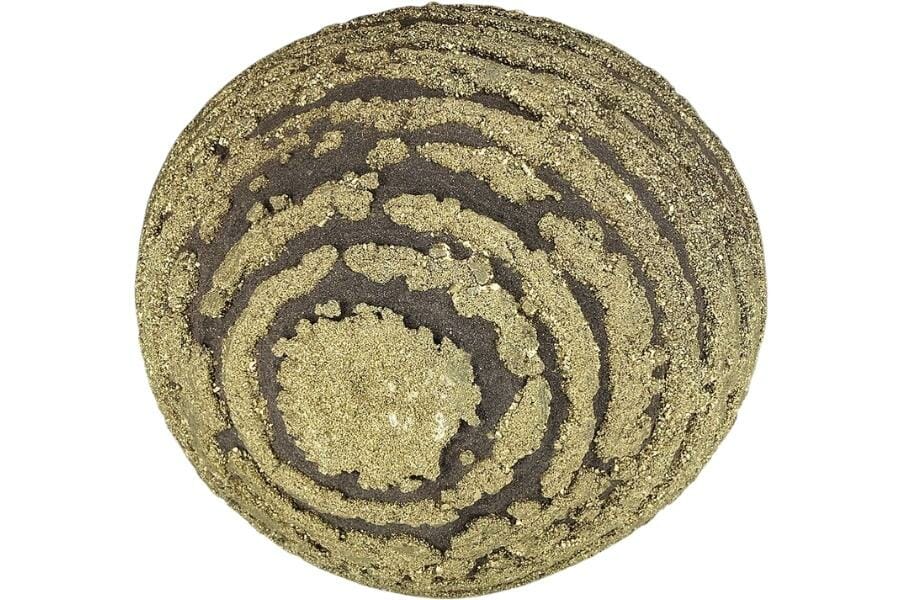
Drusy pyrite is known for its sparkling and glittering appearance. It’s unique because of its presentation as a layer of countless tiny, closely packed crystals covering a surface.
These tiny crystals create a dazzling, glittering effect, often resembling a field of tiny stars. Drusy refers to the formation of a mineral surface covered with small, closely spaced crystals.
In the case of drusy pyrite, the result is a surface that shimmers and sparkles with the reflective qualities of countless small pyrite crystals.
Drusy pyrite can be found in sedimentary rocks, hydrothermal veins, and metamorphic environments, often as inclusions within other minerals or as a coating on matrix rocks.
Skeletal pyrite
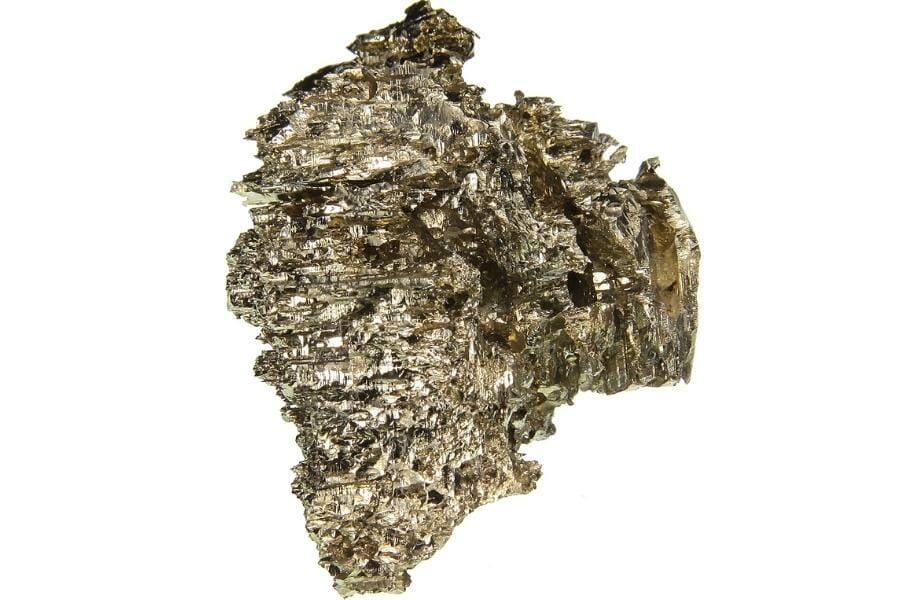
Skeletal pyrite is celebrated for its intricate and delicate crystal structures. Its skeletal appearance can resemble branches, filaments, or lattices.
Skeletal refers to the mineral’s crystal growth pattern, where intricate voids or spaces develop within the crystal structure.
In fact, its formations have sparked the curiosity of scientists due to their complex and sometimes bizarre shapes. The process behind it involves intricate crystallization patterns and environmental factors that are still a subject of study.
Skeletal pyrite can be found in hydrothermal veins, sedimentary rocks, and sometimes even in volcanic deposits.
Where To Find Pyrite
Now that you’re familiar with the different formations of pyrites, let’s proceed to the best areas where you can find pyrite here in the U.S.
Luckily, this mineral is pretty abundant (it’s the most abundant sulfide mineral!), but there are certain areas where they’re easier to find, such as:
Dugway Mining District, Tooele County, Utah
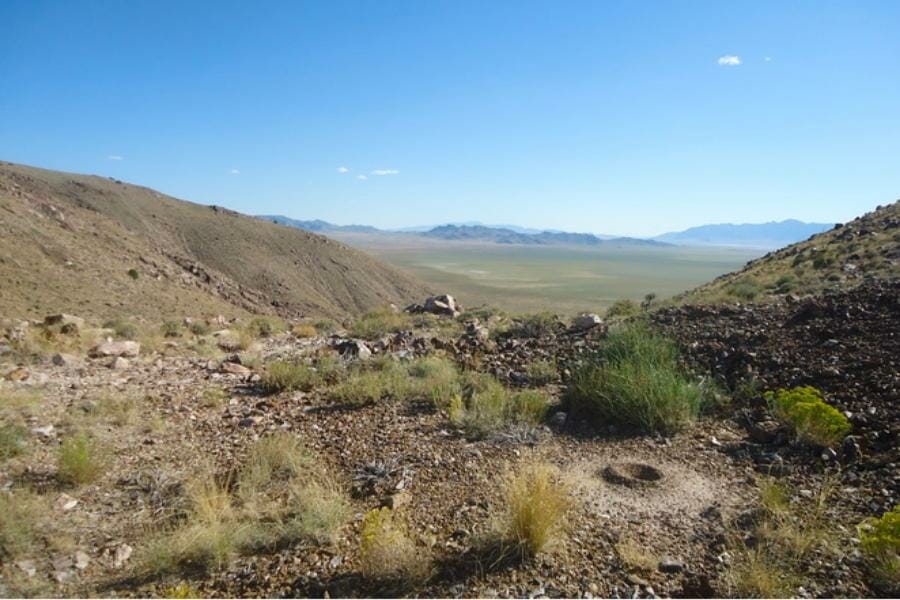
Dugway Mining District is known for its rich pyrite deposits and unique geological features. Located in Tooele County, it offers a prime opportunity for enthusiasts to discover the fool’s gold in its natural habitat.
This place is characterized by sedimentary rocks, including limestone and shale, which serve as host rocks for impressive pyrite formation.
The terrain of the Dugway Mining District is marked by rugged and picturesque landscapes, with rocky outcrops and canyons.
One interesting tidbit about the pyrite found in the Dugway Mining District is its remarkable crystal habit. They often display cubic or pyritohedral forms, known for their geometric precision and eye-catching beauty.
Eagle Mine, Eagle County, Colorado
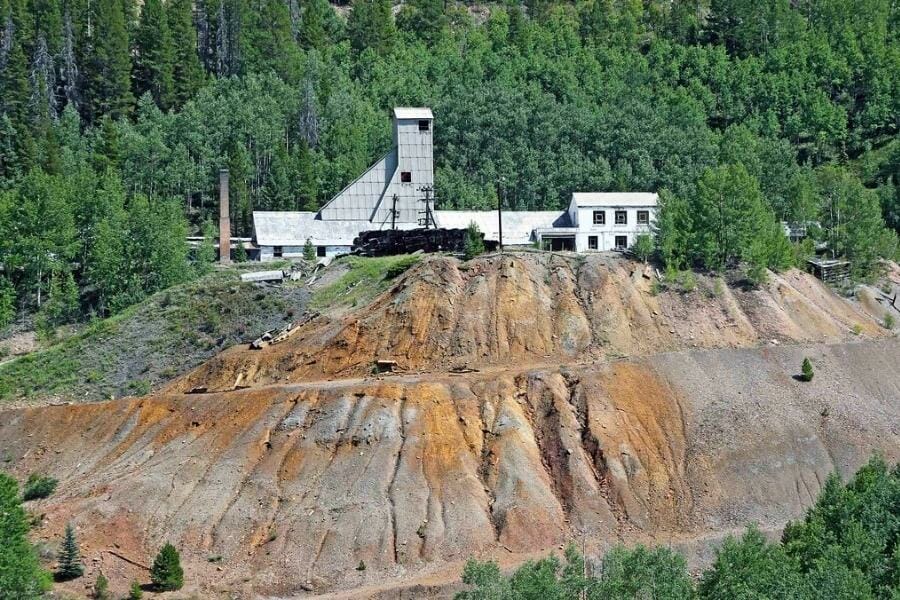
Situated in the scenic Colorado Rockies, Eagle Mine is dominated by a unique geological formation known as the Colorado Mineral Belt. It has a complex history of tectonic activity, which created ideal conditions for the formation of pyrite.
The minerals here often occur in veins within the host rocks, including quartz and various sulfide minerals.
The terrain surrounding this mine is nothing short of spectacular, too, with steep mountain slopes, dense forests, and rocky outcrops.
One fascinating aspect of the pyrite found at the Eagle Mine is its striking brassy-yellow color and well-formed cubic or pyritohedral crystals. Some specimens may exhibit intricate intergrowths with other minerals, adding to their uniqueness.
Black Pearl Mine, Yavapai County, Arizona
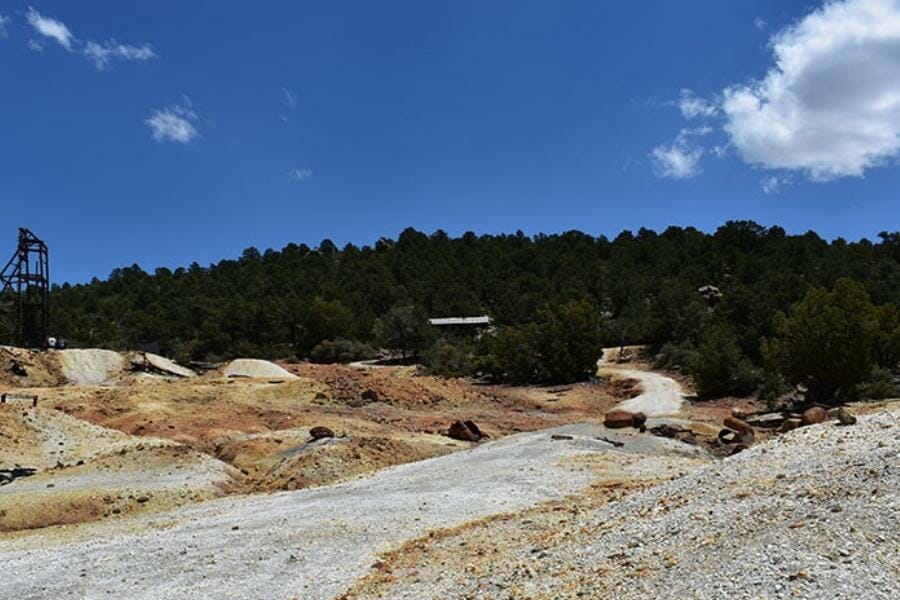
Nestled in the southwestern deserts, Black Pearl Mine’s geology is closely tied to the rich mineralization in the area. Pyrite is commonly found here within sedimentary rocks like limestone and shale.
The terrain surrounding the Black Pearl Mine showcases the rugged beauty of the Arizona desert, with vast stretches of arid landscape, rocky outcrops, and sun-scorched earth.
The pyrite found here has a stunning metallic luster and cubic or pyritohedral crystal forms. Some specimens may even have fascinating twinning patterns.
Copper Ridge Mining District, Hancock County, Tennessee

Copper Ridge Mining District is renowned for its abundant pyrite deposits and intriguing geological setting.
Its terrain boasts of the natural beauty of the Appalachian Mountains, with lush forests, rolling hills, and rocky outcrops.
Hiking through this picturesque landscape provides a chance to stumble upon pyrite specimens nestled within its formations.
If you’re eyeing to search for pyrite here, you may find specimens with well-formed cubic or pyritohedral crystals. Some specimens may also have interesting intergrowths or intricate patterns.
Sparta, Randolph County, Illinois
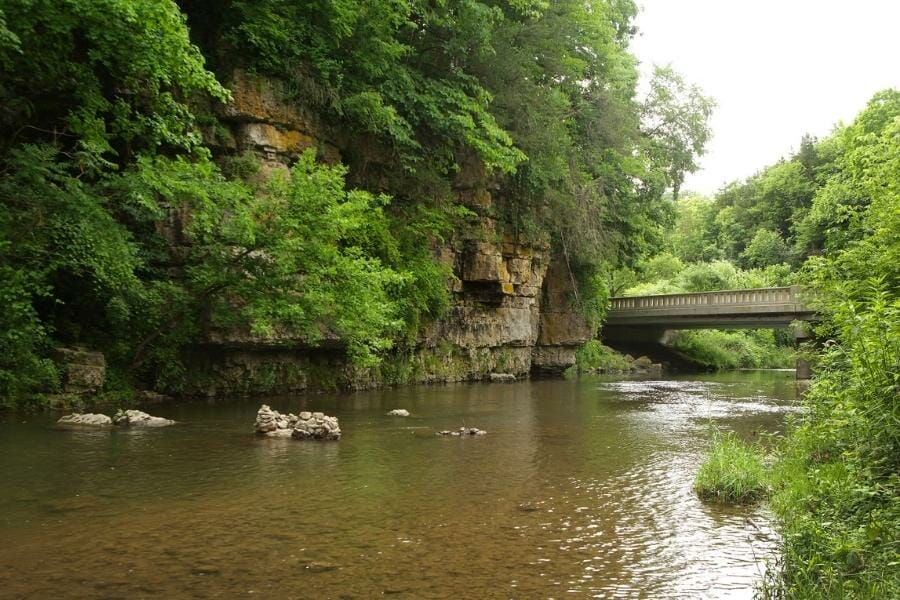
Sparta is a hidden gem in Illinois that offers a rich playground for the discovery of pyrite.
Its geology is deeply tied to its limestone-rich bedrock and the presence of shale layers. Pyrite often forms in these sedimentary rocks due to the interplay of iron and sulfur.
The terrain in and around Sparta features picturesque landscapes, with lush forests, meandering creeks, and rocky outcrops. You can find pyrite while exploring this beautiful terrain!
Collectors and enthusiasts are often drawn to the visually striking pyrite crystals found here, with their amazing crystal forms.
How To Identify Pyrite Once You Find Them
Another important step for successful pyrite hunting is to understand and get familiar with how to identify pyrite from the inside out.
To help you with that, we’ll discuss some of the most prominent features of pyrite, both inside and outside, that you can check out when inspecting a specimen.
What pyrite looks like on the outside
From the outside, pyrite has plenty of unique characteristics that you should pay close attention to, such as:
Brassy yellow color
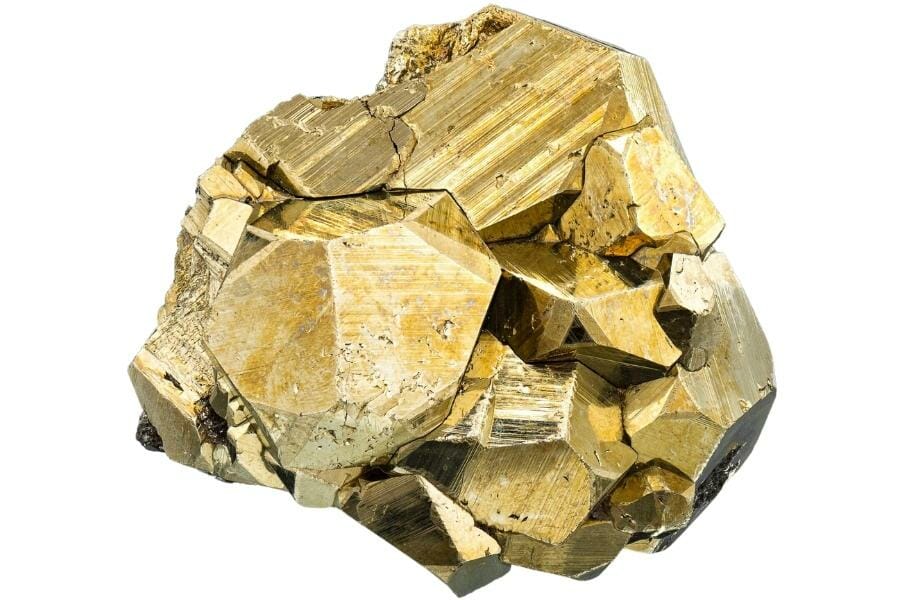
The brassy yellow color of pyrite is one of its most distinguishing characteristics and a valuable tool for field identification. When you encounter a mineral with a vibrant brassy yellow hue, it’s a strong indicator that you may have stumbled upon pyrite.
In the field, this color can be a quick and reliable visual clue for identifying pyrite. Its intense yellow shade sets it apart from many other minerals.
While gold shares a similar color, pyrite’s metallic luster and crystal forms help differentiate it.
Additionally, pyrite’s brassy yellow color tarnishes, darkens, or changes over time, unlike that of gold.
Metallic luster
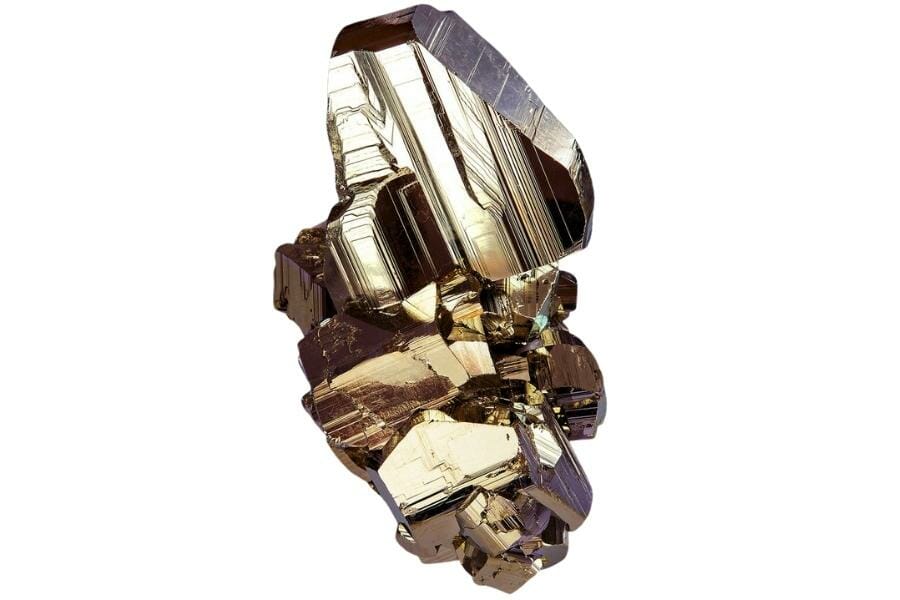
When you come across a mineral with a shiny, reflective surface that resembles polished metal, it’s a strong indication that you’ve encountered pyrite.
The metallic luster of pyrite can be quite striking and easily sets it apart from many other minerals in the wild.
This characteristic gives it a dazzling appearance, causing it to glimmer and catch the light, which can be particularly noticeable when you’re exploring rocky outcrops or sifting through sediments.
To identify pyrite based on its metallic luster, simply look for specimens that exhibit a shiny, reflective surface. This luster distinguishes pyrite from non-metallic minerals that typically have a dull or earthy appearance.
Well-defined crystal form
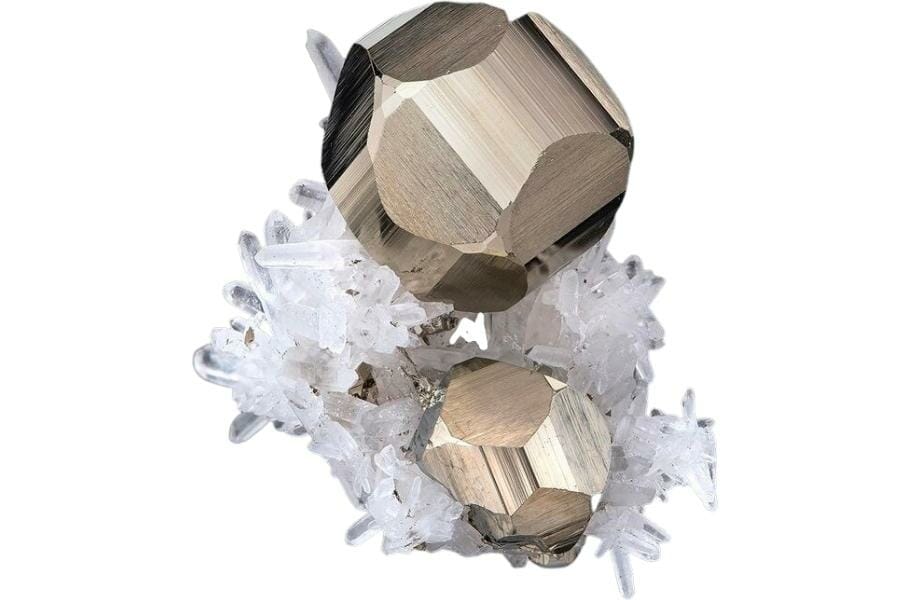
The well-defined crystal forms of pyrite are a distinctive feature that can be invaluable for your quest to identify it.
Pyrite commonly forms in geometrically precise shapes, with the most notable being cubic and pyritohedral crystals.
When you encounter minerals in the field that exhibit these well-defined crystal forms, it’s a strong indication that you may have found pyrite. These shapes are not only visually appealing but also highly characteristic of pyrite.
To identify pyrite in the field based on crystal forms, examine the specimen closely. Look for the presence of cubic or pyritohedral shapes among the mineral crystals.
The clarity and sharpness of these crystal faces can be a reliable indicator of pyrite. However, remember that not all specimens display perfect crystal forms (such as the other types we’ve discussed above), so consider other characteristics as well.
What pyrite looks like on the inside
If you have the chance to observe a specimen from the inside, you’ll know it’s probably pyrite if it has the following features:
Brassy hue
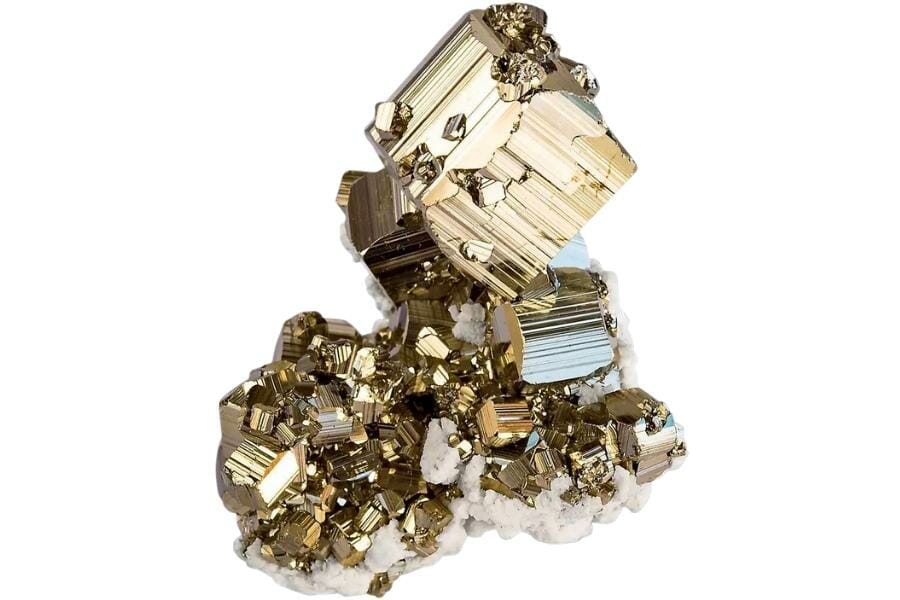
When you encounter a mineral with a vibrant golden-yellow color on its freshly exposed surfaces, it’s a strong indicator that you’ve found pyrite.
This internal coloration is a result of its high iron content, and it can be particularly noticeable when you break or cut open a specimen, revealing the fresh surfaces.
To identify pyrite in the field based on its brassy hue, pay close attention to the color of freshly exposed surfaces. The intense golden yellow shade is a hallmark of pyrite and makes it recognizable even without external features.
Radiating crystals
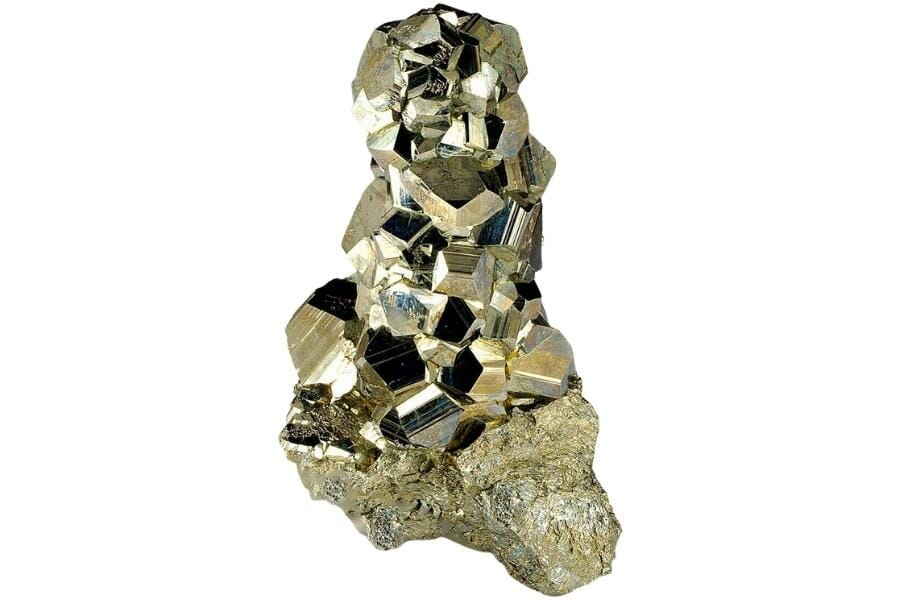
In certain pyrite specimens, especially those with a nodular or concretionary growth habit, you may find internal structures resembling the spokes of a wheel or the petals of a flower.
These radiating crystal patterns create a distinctive and eye-catching appearance when the mineral is broken open.
When you encounter a mineral in the field with these internal radiating crystals, it’s a strong indicator that you may have discovered pyrite.
These formations are unique to pyrite and are not commonly seen in other minerals. The spokes or petals often display a brassy or golden yellow color, further confirming its identity.
Variability in tarnish
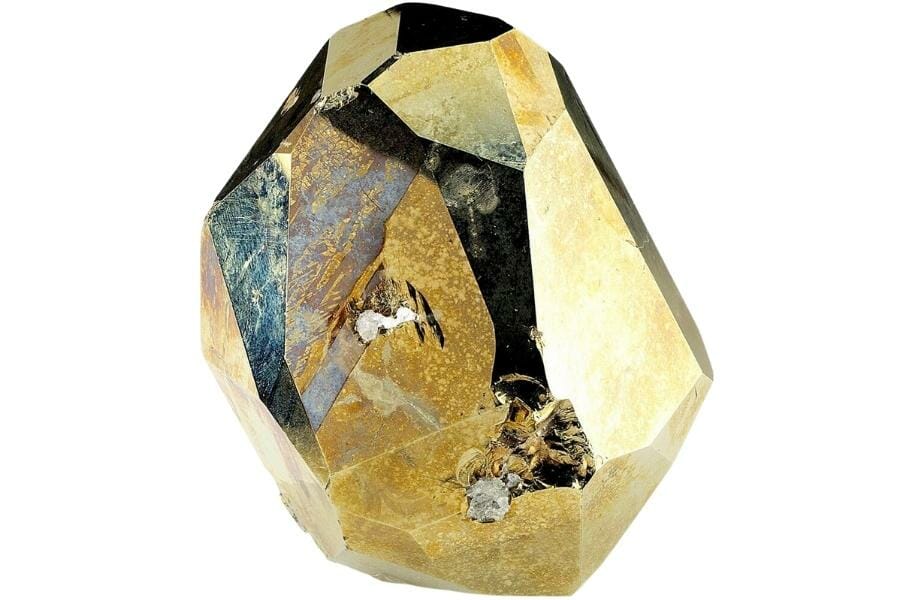
Over time, pyrite can undergo chemical changes when exposed to oxygen and moisture, leading to tarnish or oxidation.
This tarnish can vary from its typical brassy yellow color to iridescent shades of purple, blue, green, or even brown.
This variability in tarnish can be an excellent indicator of pyrite. When you encounter a mineral specimen with an iridescent or colorful tarnish on its surface, it’s a strong indication that you may have found pyrite.
This unique feature distinguishes pyrite from other minerals, as these colorful tarnish hues are relatively rare in the mineral world.
How To Find Pyrite
When you’re out and about to find pyrite, below are some very helpful tips to increase your chances of finding it:
Check for brassy yellow color and metallic luster
These two characteristics are like nature’s beacon leading you to pyrite, so you should keep an eye out for them.
The brassy yellow color is pyrite’s distinct hallmark. When you encounter a mineral with this vibrant golden hue, especially in metallic-looking crystals or masses, it’s a strong indication that you’ve come across pyrite.
When light hits pyrite, it sparkles and gleams, thanks to its reflective surface. This remarkable metallic luster makes it stand out in the field, even when it’s embedded within rocks.
Use a magnet
Pyrite is one of the few minerals that exhibit magnetic properties, setting it apart from many other look-alike minerals like gold.
Here’s how it works: When you suspect you’ve come across pyrite, simply take a small, portable magnet and bring it close to the mineral specimen.
If the specimen contains pyrite, it will be attracted to the magnet. This attraction can serve as a quick and reliable field test to confirm the presence of this mineral.
This method is particularly useful when you’re unsure about a mineral’s identity, as it helps you differentiate pyrite from non-magnetic minerals that may share similar visual characteristics.
Look for weathering patterns
Pyrite often weathers differently from the surrounding rock due to its unique chemical properties. One common weathering pattern associated with this mineral is rust-colored staining.
When pyrite reacts with oxygen and moisture, it can form iron oxide compounds, resulting in reddish-brown or orange streaks and patches on the rock’s surface.
Additionally, pyrite is prone to crumbling and disintegration when exposed to weathering. Its susceptibility to decay can create irregular or pitted surfaces, setting it apart from more durable minerals.

